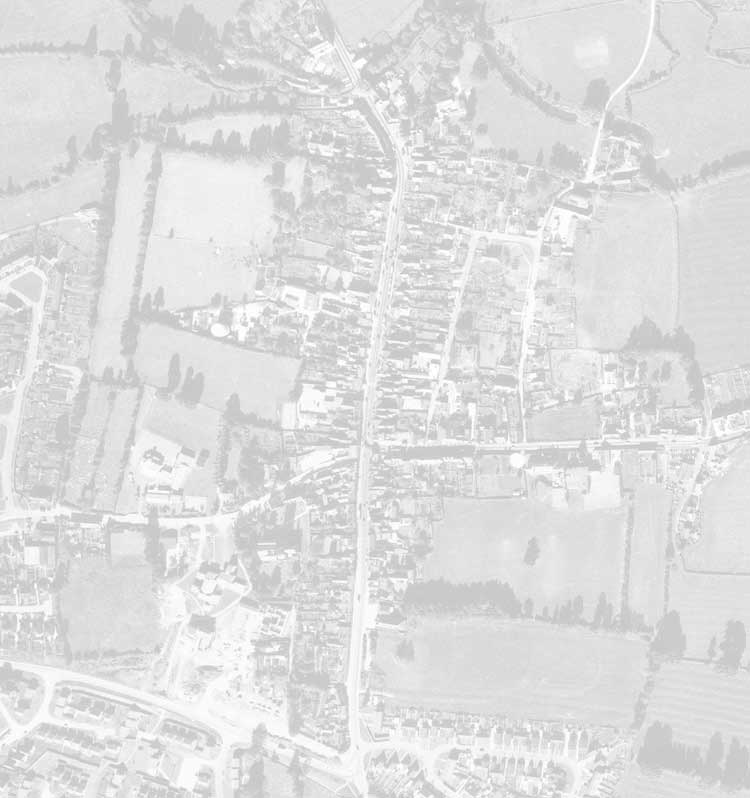Documentation
Drawings
The SVG drawings used in this website were created by Guy Hopkinson for an article
in issue 14 of the online journal Internet Archaeology. The article Excavations at Cricklade, Wiltshire, 1975 was written by Jeremy Haslam
and its publication is meant to be an exercise in "retrospective conversion".
Permatrace drawings created in 1975 were digitised in AutoCAD by Hopkinson, and six of the plan and section drawings
were chosen for publication in .dwf format. This format allowed the layered CAD drawings to be viewed interactively
online using AutoCAD's web browser plug-in Volo View Express. Hopkinson's methodology was published jointly with
Internet Archaeology editor, Judith Winters in Problems with Permatrace: a note on digital image publication.
Volo View Express is only compatible with the Microsoft Windows operating system and the Microsoft Internet
Explorer web browser. This website is meant to illustrate an alternative to this method by using SVG, a non-proprietary,
open source XML application to publish the same drawings with similar or expanded functionality.
For documentation pertaining
to the creation of the drawings, please see the articles by Haslam
and Hopkinson and Winters in Internet Archaeology.
Compatibility
This website requires the browser plug-in Adobe SVG Viewer 3.0 to properly view the images. While there are other
viewers available, Adobe's product has the greatest compatibility. It is available for the Apple, Windows and
Linux operating systems and works with Internet Explorer and Netscape. While Opera is not officially supported,
testing of this website found it to work well on both the Apple and Windows platforms. The Adobe plug-in allows all
of these platforms to be supported for viewing the SVG images, and to use the pan and zoom functions. Unfortunately, of the
different platform and browser combinations tested, only Internet Explorer for Windows works properly for controlling SVG
images using JavaScript. This is not a fault in the SVG markup language or a limitation of Adobe SVG viewer. It is due to
uneven implementation in the various browsers which should be addressed in subsequent versions.
The most popular browsers that do support SVG natively are Mozilla's Firefox 1.5, and Opera 8. Both are
available for a wide variety of operating systems, including Windows, Macintosh and Linux. Testing of these two browsers using Windows XP
and Macintosh OSX revealed uneven implementation using Firefox, whilst Opera was much more solid.
Accessibility and Validation
Per the W3C
Web Content Accessibility Guidelines 1.0, tables (when used for page formatting)
and frames have not been used. Formatting is controlled using external Cascading
Style Sheets (CSS Level 2). AA level W3C accessibility validation is claimed with the
following caveats and explanations:
- Current browsers are not able to read alternative text (the alt tag) for SVG images because the
embed tag is used rather than the image (img) tag. Instead, according to the W3C specifications, title and
description tags are used within the opening and closing tags in the SVG document.
- Unable to test in self-voicing browser.
- Unable to test using a screen reader.
- In some cases, absolute rather than relative units have been used for
stylesheet property values. Per the W3C
Accessibility Checkpoint 3.4, this is acceptable if rendered content
is validated. Unable to test in the two previously stated instances.
As designated in W3C Accessibility
Checkpoint 6.1 this site can still be navigated and understood without
stylesheets. This means it will render properly in a text-only, or any other
browser, but it is designed to perform best in Netscape or Internet Explorer
versions 5.0 or better.
The site was created in XHTML 1.0, and validation is claimed with the exception of use of the embed tag.
The embed tag is deprecated in favour of the object tag, but it is widely understood within the SVG community
that currently no popular browser implements the object tag properly. Until browser manufacturers address this issue,
the embed tag will continue to be a necessity for incorporating SVG images into (X)HTML, and has been used accordingly.
Technology
All software used to create this site (except where noted) were versions designed for the Apple Operating System:
Web Design
- BBEdit 7.0 by Bare Bones Software
- Dreamweaver MX 6.0 by Macromedia
- GoLive 6.0 by Adobe
Image Processing
- Photoshop 7.0 by Adobe
- Illustrator 10.0.3 by Adobe
- AutoCAD 2000i by AutoDesk (Windows)
Web Browsers
- Netscape 4.7
- Netscape 7.0
- Internet Explorer 5.2 (no longer available as of 31 January, 2006)
- Opera 6.02
- Opera 8.5
- Firefox 1.5
- Netscape 7.0 (Windows)
- Netscape 8.1 (Windows)
- Internet Explorer 5.0 (Windows)
- Internet Explorer 6.0 (Windows)
- Opera 6.0.4 (Windows)
- Opera 8.5 (Windows)
- Firefox 1.5 (Windows)
Other
- Acrobat 6.0 by Adobe
- VirtualPC 6.0.1 by Connectix
- Windows XP by Microsoft (Windows)
- Word X.0 by Microsoft
- Volo View Express 2.0.1 by AutoDesk (Windows)
All work was carried out on an Apple PowerBook G4, with a
PowerPC 667 MHz processor and 786 MB RAM, running Apple OSX version 10.2.3. Testing of
SVG in Netscape 4.7 was carried out using OS9 classic mode. Tasks requiring the Microsoft
Windows platform were carried out using the PC emulator VirtualPC 6.0.1 running Windows XP.
Additional online testing used the Windows 2000 operating system on University of York machines
with various hardware configurations.
Vertical aerial photo of Cricklade, 1971, Wiltshire County Council, after Haslam 2003, Figure 9.
Last updated March 15, 2006.
© 2003-2006 Holly Wright
